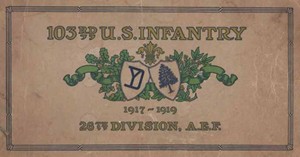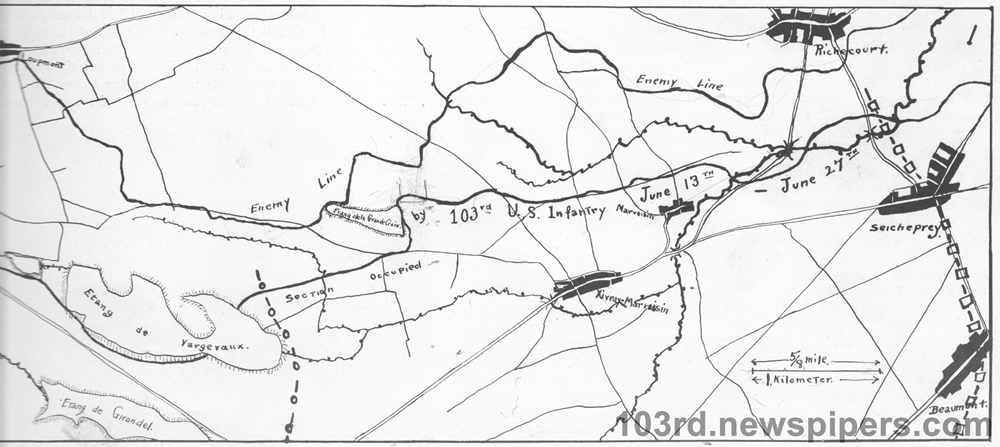
of the 26th Division of the U.S. Army
during World War I
 | The History of the 103rd Regiment of the 26th Division of the U.S. Army during World War I |
| Table of Contents | ||
|
CHAPTER V THE TOUL FRONT BEFORE passing on to the successive movements and operations in this sector, it would be well to call attention to thc general situation and im- portance of this area. Northwest of Tuul was the threatening St. Mihiel salient whose apex was at St. Mihiel. From there the line ran generally east to Pont- Et-Mousson, thence southeast. Commercy, Tuul, and, most important, Nancy were all cities against any of which the enemy might well launch an offensive. The lines had been stabilized for some time along this front, though in ne sense was it a quiet front, as the enemy activities against the 26th Division during its occupancy bore witness, - Seicheprey, Bois Brule, and Xivray-Marvoisin all being the scenes of successive operations. In spite of the apparent stabilization ef the lines, the French were very active in the rear areas, building up their defense, and during the regiment’s tour in the aren our men were often required to work on beth front-line and rear posi- tions. There was a general feeling that a drive was soon to be made against Nancy. The occupation of this area or part of it by the 26th Division was a lengthy one covering nearly three months. It is not the writer’s intention to cover in detail each particular subsector or center of resistance occupied by the regiment during this long period, but rather to give a general impression of the work done, paying attention of course to the important events which did occur. There is subtended at schedule of the places and periods of occupancy of the different centers of resistance by battalions. This with reference to the sketch will bring back many of the incidents pertaining to individuals. p During the period April 3 to June 27 the regiment held at one time or ct; other from Bois Brulc on the left nearly to Seicheprey on the right. For the most part the lines consisted of wcllmrganized trench systems and the term "treuch ws.rfare" applied closely. In this respect there was a difference from thc front line on the Soissons front. There was a great variance, however, in the matter of distance between the enemy line and the American line; on the extreme left the lines were very close, but north of St. Agnant there were stretches where the lines were a kilometer or more apart. This was a matter dependent upon the nature of the terrain. Though the division was operating under the 32nd French Corps- General Passage commanding the corps — American troops were in the lines "on their 0wn," and the sector was an American sector. The lessons learned at Soissons were furthered here. Artillery and maehine—gun fire was considerably more active; Montsec always seemed to loom above all else, and one knew that the enemy had the advantage of observation. The villages near the front, of course, had been abandoned, — St. Agnant, Bou- 
|
||
| Original Version of Page |